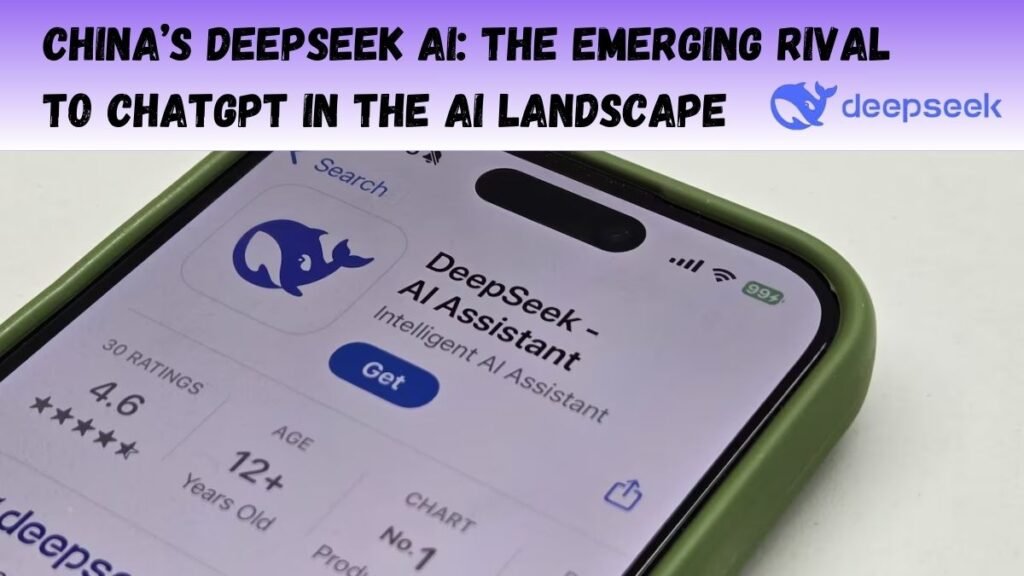The artificial intelligence landscape is growing at an unprecedented pace, with new entrants constantly pushing the boundaries of what conversational AI can achieve. Among the most significant competitors to OpenAI’s ChatGPT is DeepSeek AI, an emerging powerhouse in the field of natural language processing (NLP) and generative AI. While ChatGPT has long been a dominant force, DeepSeek AI’s innovative approach and unique features make it a strong contender for leadership in this space.
DeepSeek AI vs. ChatGPT: A Head-to-Head Comparison
DeepSeek AI has been designed with a focus on enhancing user experience, improving contextual understanding, and offering more dynamic applications. Here’s how it compares to ChatGPT across key areas:
1. Contextual Understanding
- DeepSeek AI: One of DeepSeek AI’s standout features is its enhanced contextual comprehension. It employs advanced algorithms to maintain context over extended conversations, ensuring coherent and relevant responses even in complex multi-turn dialogues. This makes it especially effective for tasks requiring nuanced understanding, such as legal research, medical advice, or academic assistance.
- ChatGPT: While ChatGPT excels in generating human-like responses, it sometimes struggles with maintaining long-term context or handling ambiguous queries. DeepSeek AI aims to close this gap with its superior memory capabilities.
2. Domain Specialization
- DeepSeek AI: A major advantage of DeepSeek AI is its focus on domain-specific expertise. It leverages fine-tuned models tailored for industries like healthcare, finance, law, and engineering, providing precise and authoritative responses in these areas. For instance, DeepSeek AI can generate detailed technical documentation or financial reports with ease.
- ChatGPT: ChatGPT is versatile and well-suited for general-purpose use, but its domain-specific knowledge often requires external fine-tuning or additional training data. This gives DeepSeek AI a competitive edge for enterprise clients seeking specialized AI solutions.
3. Real-Time Data Integration
- DeepSeek AI: DeepSeek AI features a real-time data integration system, allowing it to pull up-to-date information from external databases, APIs, and the internet. This capability makes it invaluable for applications like live customer support, stock market analysis, or real-time troubleshooting.
- ChatGPT: ChatGPT relies on static training data up to its most recent update (unless connected to an external tool). While OpenAI has improved real-time capabilities in newer versions, DeepSeek AI’s seamless integration of live data stands out.
4. Personalization
- DeepSeek AI: Personalization is a cornerstone of DeepSeek AI’s approach. It allows users to create custom profiles and adjust the AI’s tone, style, and behavior to match specific needs. For example, businesses can train DeepSeek AI to reflect their brand voice or professionals can fine-tune it to align with their work preferences.
- ChatGPT: While ChatGPT offers some degree of customization, such as temperature settings for creativity, it lacks the deep personalization features inherent in DeepSeek AI.
5. Ethical AI and Transparency
- DeepSeek AI: DeepSeek AI emphasizes transparency and ethical AI practices. It includes detailed explanations of how its algorithms process and generate outputs. This is particularly appealing to industries and governments concerned about bias, accountability, and explainability in AI systems.
- ChatGPT: OpenAI has made strides in ethical AI, implementing guidelines to reduce biases and harmful outputs. However, DeepSeek AI’s focus on explicit transparency may make it more appealing to sectors with strict regulatory requirements.
6. Scalability and Deployment
- DeepSeek AI: DeepSeek AI offers a modular architecture, making it highly scalable and customizable for various deployment scenarios. Businesses can integrate it into existing workflows, whether on-premises or in the cloud. It also supports multi-modal capabilities, enabling text, image, and even video processing in one unified platform.
- ChatGPT: ChatGPT primarily operates through its web interface or APIs, which are effective but can sometimes lack the flexibility required for complex enterprise use cases.
Advantages That Position DeepSeek AI as a Competitor
While ChatGPT remains a leader in conversational AI, DeepSeek AI’s competitive advantages include:
- Targeted Industry Solutions: Its specialization in key industries positions it as a go-to solution for enterprise clients.
- Real-Time Intelligence: The ability to access live data offers significant advantages in dynamic fields like finance and customer service.
- Transparency and Trust: Its commitment to ethical AI practices builds confidence among users and regulators.
- Enhanced Personalization: DeepSeek AI’s customizable interface and behavior make it more adaptable to specific use cases.
Challenges for DeepSeek AI
While DeepSeek AI has clear strengths, it faces some challenges in competing with ChatGPT:
- Brand Recognition: ChatGPT has a strong brand presence and a head start in the AI market, making it a household name.
- User Base: OpenAI’s ChatGPT boasts millions of active users worldwide, while DeepSeek AI is still building its user base.
- Infrastructure: OpenAI benefits from robust infrastructure and partnerships, such as its collaboration with Microsoft, which enhances its deployment capabilities.
The Future of AI Competition
As the race for AI dominance heats up, DeepSeek AI and ChatGPT are likely to influence each other’s growth and development. Competition will drive both platforms to innovate, ensuring better services for consumers and enterprises. For DeepSeek AI, the focus on domain expertise, real-time data, and ethical AI practices positions it as a formidable challenger.
For users, this competition is nothing but good news. With platforms like DeepSeek AI pushing the boundaries of what conversational AI can do, the future of AI-driven interactions is more exciting than ever. Whether it’s through advancements in context retention, real-time data access, or domain-specific applications, the era of intelligent and adaptive AI has only just begun.
